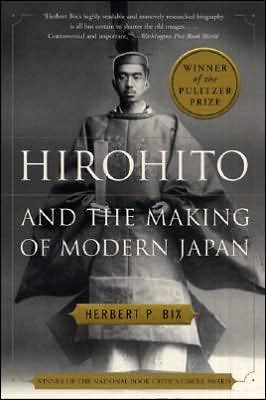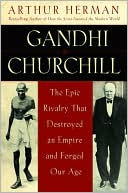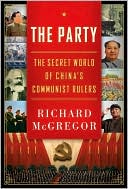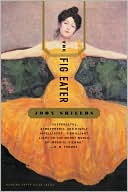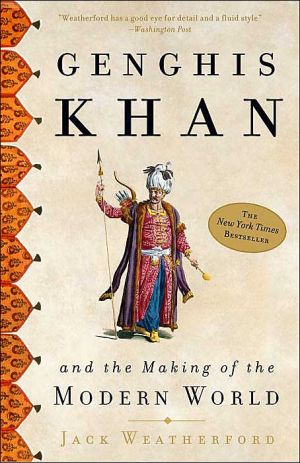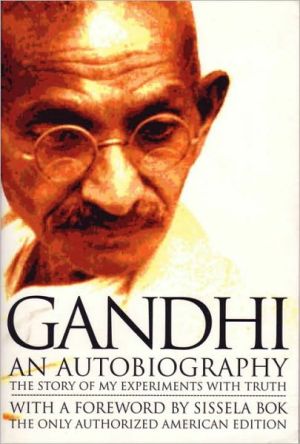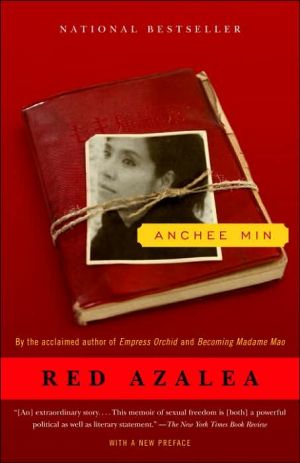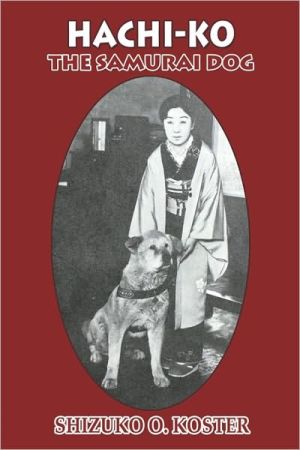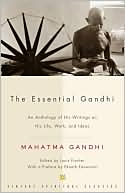Hirohito and the Making of Modern Japan
Winner of the Pulitzer Prize\ In this groundbreaking biography of the Japanese emperor Hirohito, Herbert P. Bix offers the first complete, unvarnished look at the enigmatic leader whose sixty-three-year reign ushered Japan into the modern world. Never before has the full life of this controversial figure been revealed with such clarity and vividness. Bix shows what it was like to be trained from birth for a lone position at the apex of the nation's political hierarchy and as a revered symbol...
Search in google:
Trained since childhood to lead his nation as a living deity, Japan's Emperor Hirohito cultivated the image of a reluctant, detached monarch, a façade which masked a fierce cunning and powerful ambition. Historian Herbert P. Bix has unearthed hundreds of previously untapped documents, including the unpublished letters and dairies of members of Hirohito's royal court, tracing the key events of his 63-year reign (1926-1989), and shedding light on his uniquely active yet self-effacing stewardship. Debunking the common image of Hirohito as a pawn in the hands of the military, Bix exposes the emperor's personal involvement in every stage of the Pacific War. With rare insight, he shows how Hirohito avoided punishment of his nation's defeat and how the Japanese people have struggled to come to terms with this dark chapter in their history. Written in rich and vivid detail, Hirohito and the Making of Modern Japan brings new clarity to the impact this enigmatic figure has had on Japan and its place on the world stage. Publishers Weekly A stunning portrait of the controversial Japanese emperor. . . . Bix gives a meticulous account of his subject, delivers measured judgments about his accomplishments and failures, and reveals the subtlety of the emperor's character. . . . This is political biography at its most compelling.
The Boy, the Family, and the Meiji Legacies\ Emperor Meiji's first grandson was born on April 29, 1901, within the Aoyama Palace in Tokyo. The moment was one of national delight, and virtually the entire nation celebrated, especially the court. The spirits of the reigning emperor's ancestors were duly notified that the blessed event had come to pass, and that the baby seemed hale and vigorous. An heir had been born; the ancient dynasty would continue, “unbroken,” for at least a few more generations. Scholars wise in the complexity of names and titles conferred. The infant, they announced, would be given the title “Prince Michi,” connoting one who cultivates virtue, and given the name “Hirohito,” taken from the terse Chinese aphorism that when a society is affluent, its people are content.\ The young but chronically ill Crown Prince Yoshihito, next in line to the throne, was twenty-one that spring. The bloomingly fit Princess Sadako was just sixteen. In time she would bear him three more sons: Yasuhito and Nobuhito in 1902 and 1905 respectively, and Takahito (Prince Mikasa) in 1915.2 As for the baby's grandfather, Emperor Meiji, at forty-eight he had occupied the Chrysanthemum Throne for thirty-four years, and would continue to reign for eleven more.\ According to custom, the children of Japanese royals were raised apart from their parents, under the care of an appropriate surrogate. Yoshihito had been taken while still a very small infant to be raised the time-honored way. Shortly after his birth in 1879, he contracted cerebral meningitis. Meiji insisted that he be treated according to traditional (Chinese herbal) rather than Western medicalpractice.3 The baby failed to respond quickly and thereafter struggled through a hard, painful, often bedridden childhood. At different periods lasting several years he could seem more or less normal, but there were other times when he was hopelessly afflicted, and he was never robust. He became a royal dropout after managing somehow to graduate from the primary course of the Peers' School (Gakushuin) and to finish one year of middle school.\ Could the origin of the crown prince's problems have been in part genetic? Emperor Meiji had fathered fifteen children by five different women, and lost eleven of them. Yoshihito, the third son, was the only male to survive, and his mother was not the empress but one of Meiji's many concubines. Inevitably the court suspected that hundreds of years of imperial inbreeding had resulted in a genetic defect of some sort that might show itself in the generation that would be sired by Yoshihito.\ Naturally enough Meiji and his advisers took extreme care in choosing the princess who would marry Yoshihito and bear his offspring. Their ultimate choice was Princess Kujo Sadako, a young girl from one of the highest-ranking court families. The Kujo were a branch of the ancient Fujiwara, a lineage that reached back to the late twelfth century, when its founding ancestor had become regent for the then-reigning emperor. Sadako had excellent evaluations at the girls' division of the Peers' School. Intelligent, articulate, petite, she was especially admired for her pleasant disposition and natural dignity. In all her attributes she was just the opposite of Yoshihito.\ The couple, who had met on several chaperoned occasions, were married in early 1900. As the years passed, Sadako grew in self-confidence and maturity, and the wisdom Meiji had shown in choosing her for his son was more and more praised.Emperor Meiji, in consultation with Yoshihito and Sadako, had decided that his grandson Hirohito should be reared in the approved modern manner, by a military man. It seemed wise, therefore, that the parental surrogate be a married army or navy officer who could provide the child not only with a good family atmosphere but also a martial influence. His first choice, Gen. Oyama Iwao, declined to undertake this heavy responsibility. They then turned to the elderly Count Kawamura Sumiyoshi, a retired vice admiral and ex–navy minister from the former Satsuma domain (a feudal fiefdom equivalent to a semisovereign state), and asked him to rear the child just as though he were his own grandson. Kawamura, a student of Confucian learning, could be further trusted because he was a distant relation by marriage of Yoshihito's mother.6 On July 7, the seventieth day after his birth, Hirohito was removed from the court and placed in the care of the Kawamura family. At the time Kawamura allegedly resolved to raise the child to be unselfish, persevering in the face of difficulties, respectful of the views of others, and immune from fear.7 With the exception of the last, these were characteristics that distinguished Hirohito throughout his life.\ Hirohito was fourteen months old when his first brother'Yasuhito (Prince Chichibu)'joined him at the Kawamura mansion in Tokyo's hilly, sparsely populated Azabu Ward. The two infants remained with the Kawamuras for the next three and a half years, during which time three doctors, several wet nurses, and a large staff of servants carefully regulated every single aspect of their lives, from the Western-style food they ate to the specially ordered French clothing in which they were often dressed. Then in November 1904, at the height of the Russo-Japanese War, the sixty-nine-year-old Kawamura died. Hirohito, age three, and Chichibu, two, rejoined their parents'first at the imperial mansion in Numazu, Shizuoka prefecture, and later in the newly built Koson Palace within the large (two-hundred-acre) wall-enclosed compound of the crown prince's Aoyama Palace. In 1905 Nobuhito (Prince Takamatsu) was born, and toward the end of that year joined his brothers at their Koson Palace home. Their care was directed at first by Yoshihito's newly appointed grand chamberlain, Kido Takamasa; later their own special chamberlain was appointed.\ During this earliest formative phase of Hirohito's life, one of the chief nurses attending him was twenty-two-year-old Adachi Taka, a graduate of the Tokyo Higher Teacher's School and later the wife of Hirohito's last wartime prime minister, Adm. Suzuki Kantaro. Taka could well have been called his substitute mother. Remembering this period later in her own life, Taka contrasted Hirohito's calm, deliberate, sedate nature and body movements as a baby with those of the more energetic, curious, and temperamental Chichibu.8 The brothers were indeed very different emotionally, both as little boys and as adults. But young Hirohito was more assertive than she intimates, while the mature Showa emperor was the embodiment of energetic monarchism, and much more driven by emotions than nurse Taka ever foresaw.
List of MapsviiiAcknowledgmentsixIntroduction1Part IThe Prince's Education, 1901-19211The Boy, the Family, and the Meiji Legacies212Cultivating an Emperor573Confronting the Real World83Part IIThe Politics of Good Intentions, 1922-19304The Regency and the Crisis of Taisho Democracy1275The New Monarchy and the New Nationalism1716A Political Monarch Emerges205Part IIIHis Majesty's Wars, 1931-19457The Manchurian Transformation2358Restoration and Repression2799Holy War31710Stalemate and Escalation35911Prologue to Pearl Harbor38712The Ordeal of Supreme Command43913Delayed Surrender487Part IVThe Unexamined Life, 1945-198914A Monarchy Reinvented53315The Tokyo Trial58116Salvaging the Imperial Mystique61917The Quiet Years and the Legacies of Showa647Notes689Index771
\ Los Angeles TimesExplosive. . . . Demolishes the stereotype of Japan's wartime emperor as a mousy and passive figurehead.\ \ \ \ \ Publishers WeeklyA stunning portrait of the controversial Japanese emperor. . . . Bix gives a meticulous account of his subject, delivers measured judgments about his accomplishments and failures, and reveals the subtlety of the emperor's character. . . . This is political biography at its most compelling.\ \ \ Stephen Butler...a pathbreaking study of the diaries, letters, and Japanese scholarship that have gradually become available following Hirohito's death. And it prompts a major reconsideration of both what happened during the war and why Japan cannot face the past.\ —U.S. New & World Report\ \ \ \ \ New YorkerThe author's virtuoso scholarship and acceddible narrative invite us into Hirohito's world and change the way we think of recent history; his portrayal of a monarch rationalizing evil is superb.\ \ \ \ \ Ronald SpectorImportant and provocative . . . Bix presents one of the first complete biographies of the emperor in English based on new Japanese scholarship, as well as on extensive research of his own . . .\ —New York Times Book Review\ \
